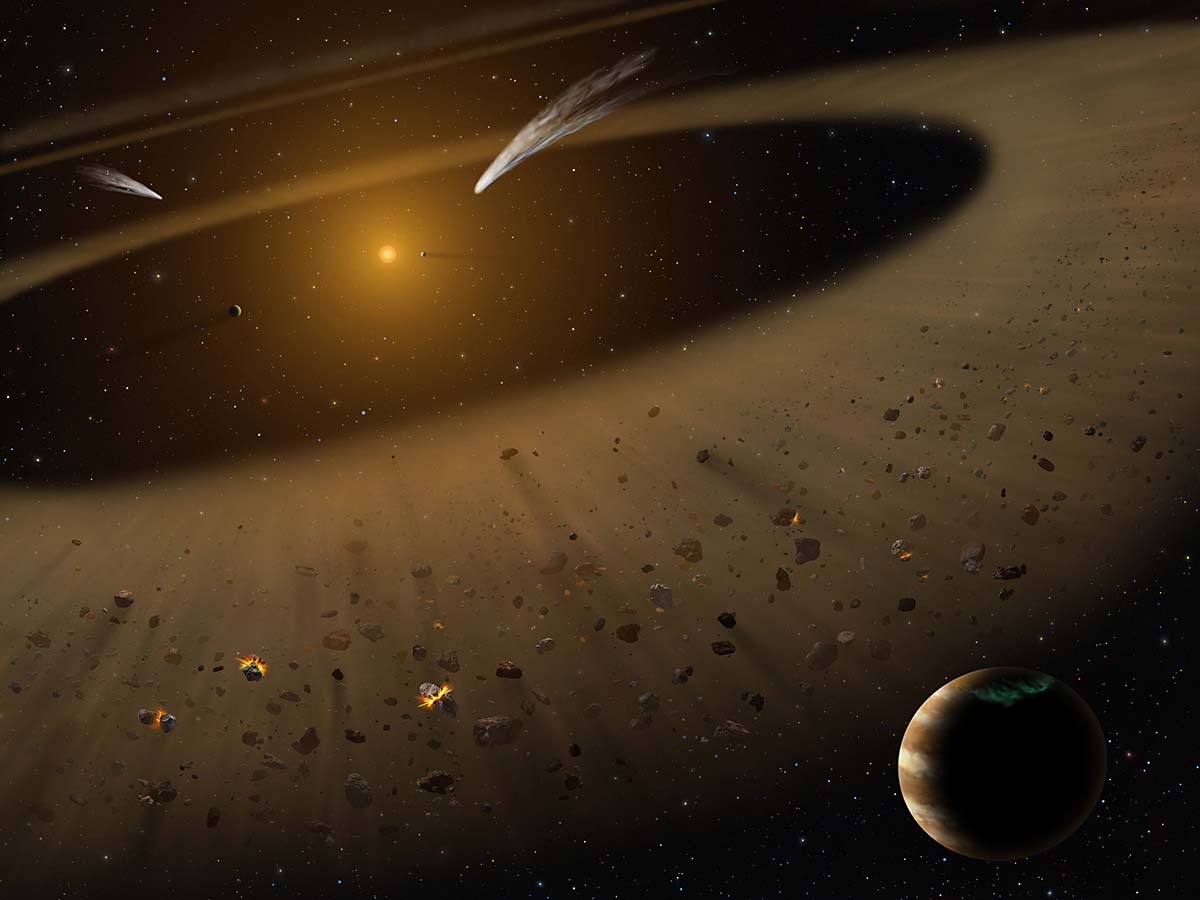
 NASA’s flying observatory, the Stratospheric Observatory for Infrared Astronomy (SOFIA), recently completed a detailed study of the planetary system around the nearby star Epsilon Eridani. The investigations confirmed that this planetary system has an architecture remarkably similar to that of our solar system.
NASA’s flying observatory, the Stratospheric Observatory for Infrared Astronomy (SOFIA), recently completed a detailed study of the planetary system around the nearby star Epsilon Eridani. The investigations confirmed that this planetary system has an architecture remarkably similar to that of our solar system.
Located 10.5 light-years away in the southern constellation Eridanus, the Epsilon Eridani (Eps Eri for short) system is the closest planetary system around a star similar to the early Sun.
Previous studies indicated that Eps Eri has a debris disk, which is the name astronomers give to leftover material still orbiting a star after planetary construction has completed. Furthermore, careful measurements of the motion of Eps Eri indicates that a planet with nearly the same mass as Jupiter circles the star at a distance comparable to Jupiter’s distance from the Sun.
With the new SOFIA images, Kate Su of the University of Arizona and her research team were able to distinguish between two theoretical models of the location of warm debris, such as dust and gas, in the Eps Eri system. These models were based on prior data obtained with NASA’s Spitzer space telescope.
One model indicates that warm material is in two narrow rings of debris, which would correspond respectively to the positions of the asteroid belt and the orbit of Uranus in our solar system. Using this model, theorists indicate that the largest planet in a planetary system might normally be associated with an adjacent debris belt.
The other model attributes the warm material to dust originating in the outer Kuiper-Belt-like zone and filling in a disk of debris toward the central star. In this model, the warm material is in a broad disk, and is not concentrated into asteroid belt-like rings nor is it associated with the any planets in the inner region.
Using SOFIA, Su and her team ascertained that the warm material around Eps Eri is in fact arranged like the first model suggests; it is in at least one narrow belt rather than in a broad continuous disk.
These observations were possible because SOFIA has a larger telescope diameter than Spitzer, 100 inches in diameter compared to Spitzer’s 33.5 inches, which allowed the team onboard SOFIA to discern details that are three times smaller than what could be seen with Spitzer. Additionally, SOFIA’s powerful mid-infrared camera called FORCAST, the Faint Object infraRed CAmera for the SOFIA Telescope, allowed the team to study the strongest infrared emission from the warm material around Eps Eri, at wavelengths between 25 and 40 microns, which are undetectable by ground-based observatories.
SOFIA is a Boeing 747SP jetliner modified to carry a 100-inch diameter telescope. It is a joint project of NASA and the German Aerospace Center, DLR. The aircraft is based at NASA’s Armstrong Flight Research Center in Palmdale, California.
WHERE SCI-FI AND SCIENCE FACT CONVERGE. In addition to being the fictional venue for the 5-mile-long space station in the TV series “Babylon Five,” the star Epsilon Eridani has figured in numerous works of TV, film, and literature. Some have suggested it as the site of planet Vulcan, home of Star Trek’s Mr. Spock, but most sources place Vulcan at another nearby star, 40 Eridani.
For more on the fictional appearances of this intriguing star, see:
en.wikipedia.org/wiki/Epsilon_Eridani_in_fiction#General_uses_of_Epsilon_Eridani


Be the first to comment